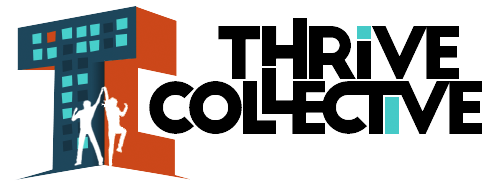Ed note: The contents of this page are reproduced from the original 20/20 Vision for School’s website for archival reference.
“I don’t want to send another generation of American children to failing schools. I don’t want that future for my daughters. I don’t want that future for your sons. I do not want that future for America.” – President Barack Obama
“Education is the civil rights issue of this century. Equal access to public education has been gained. But what is the value of access to a failing school?” – Senator John McCain
 Our Purpose
Our Purpose
To transform schools within a generation of students.
Our Mission
To catalyze students and stakeholders to partner with schools for sustainable reform.
Our Belief
We mobilize and equip New Yorkers of all social sectors to engage the issues of sustainable reform in meaningful ways. The promise of public education can be realized in our most distressed communities when Community Stakeholders join educators to address the challenges holistically. We believe that sustainable reform will be achieved when the responsibility for educating children is shared by Community Stakeholders and the constituencies they lead, not outsourced exclusively to politicians, teachers, and academics.
Why Education Reform?
If the moral test of a society is how it treats children, the United States of America has failed the same test year after year for decades. Specifically, we have failed to educate the urban poor despite promising equal access to quality education for all. This educational inequity – where the place of one’s childhood determines the quality of one’s education – has been called our nation’s greatest injustice and the civil rights issue of our day.
In September 2008, the New York City Leadership Center and the Coalition of Urban Youth Workers (the “Coalition”) launched 20/20 Vision for Schools (“20/20” or “20/20 Vision”) to mobilize leaders to transform public education within a single generation of students. Children who began first grade that year are the high school graduating class of the year 2020 – the first generation for whom the promise of public education may be realized without regard to race and class.
THE SOBERING REALITY: THE NEED
Everyday in New York City:
- ➢ 486,265 children live in poverty.
- ➢ 180 babies are born into poor families.
- ➢ 23 babies are born to teen parents.
- ➢ 14,731 children are homeless.
- ➢ 257 children are reported abused or neglected.
- ➢ Every four days a young person under 20 is murdered.
(Source: Citizen’s Committee for Children of NYC, 2010)
We offer them an escape, promising that if they stay in school, they will be able to overcome poverty and achieve in life. But that promise rings hollow for too many New York City children.
The City of New York educates 1.1 million students in 1,600 public schools every year – a population that, by itself, would be the tenth largest city in America. Even after a decade of reform, a population larger than Boston, Seattle, and Washington D.C. lacks proficiency in math or reading in those schools every day.
- ➢ 64% of fourth-graders and 67% of eighth-graders are NOT proficient in reading according to federal standards.
- ➢ 60% of fourth-graders and 66% of eighth-graders are NOT proficient in math.
- ➢ Performance results vary widely by neighborhood, with economic variables being a primary indicator of achievement.
- ➢ The racial achievement gap is alarming: while 45% of white students and 52% of Asians are proficient, only 18% of black students and 22% of Hispanic students are.
- ➢ Rates of proficiency have been essentially flat since 2002 despite a decade of reform.
(Source: 2010 National Assessment for Educational Progress, U.S. Department of Education)
Nationally, the need for sustainable education reform is similarly urgent.
- ➢ Children living in low-income communities are two to three grades behind their higher-income peers by the time they reach fourth grade.
- ➢ Only half of students in low-income communities will graduate high school by age eighteen.
- ➢ On average, those who do graduate will perform at an eighth-grade level.
- ➢ Only 1 in 10 students growing up in poverty will graduate from college.
- ➢ According to a study by McKinsey & Company, educational inequity costs the country $500 billion each year – the equivalent of a permanent national recession.
(Source: Teach for America)
Educational Apartheid on 96th Street
Noted education reformer Geoffrey Canada of Harlem Children’s Zone describes the educational inequity that plagued District 3 in Upper Manhattan for decades as: ”a system almost of apartheid, where below 96th Street, the schools were doing great, and the schools we cared about were doing lousy.” District 3 spans the Upper West Side, one of the nation’s wealthiest neighborhoods, and reaches into Central Harlem, historically one of its poorest. (“The Harlem Project” by Paul Tough, New York Times Magazine, June 20, 2004.)
WHY NOW?
The chronic lack of proficiency means hundreds of thousands of NYC public school students lack the skills necessary to:
- ➢ Graduate college.
- ➢ Compete in an information economy.
- ➢ Complete job applications.
- ➢ Manage household finances.
20/20 Vision for Schools has drawn a line in the sand, declaring that the generation of students who began first grade in September 2008 – the high school graduating class of 2020 – will be the generation for whom the promise of public education is realized.
Every one of New York City’s two million children deserves equal access to a first-class education, regardless of the economic circumstance of their birth or the neighborhood where they live. 20/20 Vision provides the resolve and strategy to overcome a history of institutional failure with innovation, collaboration, and accountability.
[Download the 20/20 Vision for Schools Summary Report and Action Plan.]


Leave a Reply